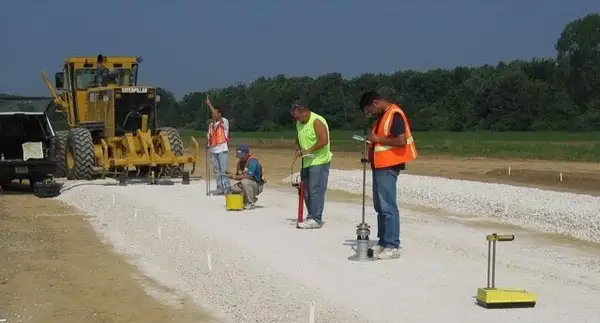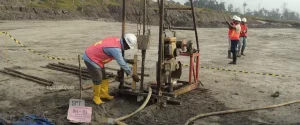Geotechnical engineering plays a vital role in ensuring the safety and stability of construction projects by analyzing the behavior of soil and rock. One of the most crucial components of geotechnical engineering is conducting laboratory tests. These tests provide detailed insights into the physical and mechanical properties of subsurface materials, guiding engineers in designing and implementing effective solutions for various projects.
In this article, we explore the primary types of laboratory tests in geotechnical engineering, their methodologies, and practical applications in construction and infrastructure development.
Classification Tests
Classification tests form the foundation of soil and rock analysis. These tests determine the basic properties of materials, such as grain size, texture, and composition, which help categorize them into different soil groups.
Key Tests:
- Grain Size Analysis: This test identifies the distribution of soil particles by size using sieves or hydrometers. It is essential for classifying soil as sand, silt, or clay.
- Atterberg Limits Test: This test assesses the plasticity of fine-grained soils by determining the liquid limit, plastic limit, and shrinkage limit.
Applications: Classification tests are vital for preliminary site investigations, providing data that informs the choice of further testing and design parameters for foundations, embankments, and pavements.
Compaction Tests

Compaction tests evaluate the soil’s ability to achieve maximum density under specific moisture conditions. These tests ensure that soil layers provide sufficient strength and stability when used in construction.
Key Tests:
- Standard Proctor Test: Determines the optimal moisture content for achieving maximum dry density.
- Modified Proctor Test: Similar to the standard test but applies higher compactive energy, suitable for heavy-duty construction.
Applications: Compaction tests are crucial for earthworks, including road construction, dam building, and retaining walls, ensuring the ground can support loads without excessive settlement.
Shear Strength Tests
Shear strength tests measure the resistance of soil or rock to shearing forces. This property is critical for evaluating slope stability, bearing capacity, and lateral earth pressures.
Key Tests:
- Direct Shear Test: Determines shear strength parameters under controlled normal stress.
- Triaxial Test: Provides detailed information about strength and deformation characteristics under varying stress conditions.
- Unconfined Compression Test: Specifically used for cohesive soils to determine undrained shear strength.
Applications: Shear strength tests are indispensable for designing retaining walls, slopes, and foundations where soil stability is a concern.
Consolidation Tests
Consolidation tests assess the time-dependent settlement behavior of soils when subjected to loading. These tests help predict long-term settlements, which are vital for designing structures that require stability over extended periods.
Key Test:
- Oedometer Test: Measures the compressibility and rate of consolidation of soil under vertical loading.
Applications: These tests are particularly relevant for projects involving high loads, such as multi-story buildings, bridges, and storage tanks, where excessive settlement can lead to structural failures.
Permeability Tests
Permeability tests measure the ability of soil or rock to allow water flow, a crucial factor in assessing drainage and seepage behavior.
Key Tests:
- Constant Head Test: Suitable for coarse-grained soils with high permeability.
- Falling Head Test: Used for fine-grained soils with lower permeability.
Applications: Permeability tests are essential for designing drainage systems, embankments, and flood control structures. They also help mitigate issues like waterlogging and piping in earth dams.
Chemical Tests
Chemical tests analyze the chemical composition of soils and rocks to identify potentially harmful substances or conditions that may affect construction.
Key Tests:
- pH Testing: Determines the acidity or alkalinity of soil.
- Sulfate Content Test: Evaluates the presence of sulfates, which can cause deterioration in concrete.
- Organic Matter Content Test: Measures the percentage of organic content, which can affect soil strength.
Applications: These tests ensure the compatibility of soil with construction materials and help mitigate risks associated with chemical reactions, such as corrosion or degradation of concrete and steel.
Specialized Tests
In addition to the common tests mentioned above, specialized laboratory tests address specific challenges in geotechnical engineering. These may include:
- Thermal Conductivity Tests: Assess heat transfer properties of soil for energy projects.
- Cyclic Loading Tests: Evaluate soil behavior under repeated loading, essential for earthquake-prone regions.
- Free Swell Index Test: Measures the swelling potential of expansive clays.
Why Laboratory Tests Are Important
Laboratory tests are the cornerstone of reliable geotechnical analysis. By providing accurate, quantifiable data about soil and rock properties, these tests allow engineers to:
- Develop safe and cost-effective designs.
- Minimize construction risks.
- Predict and prevent structural failures.
- Ensure compliance with industry standards and regulations.
At AOA Geo-Net, we understand the critical role laboratory tests play in the success of construction projects. With state-of-the-art facilities and a team of seasoned experts, we offer comprehensive testing services tailored to your project’s unique requirements. Whether you need classification tests for initial assessments or advanced analyses for complex challenges, AOA Geo-Net is your trusted partner in geotechnical engineering.




